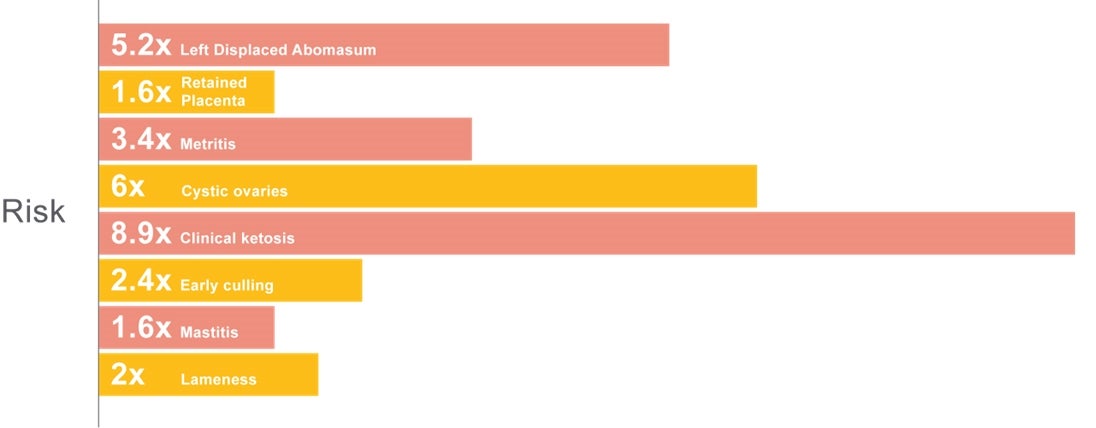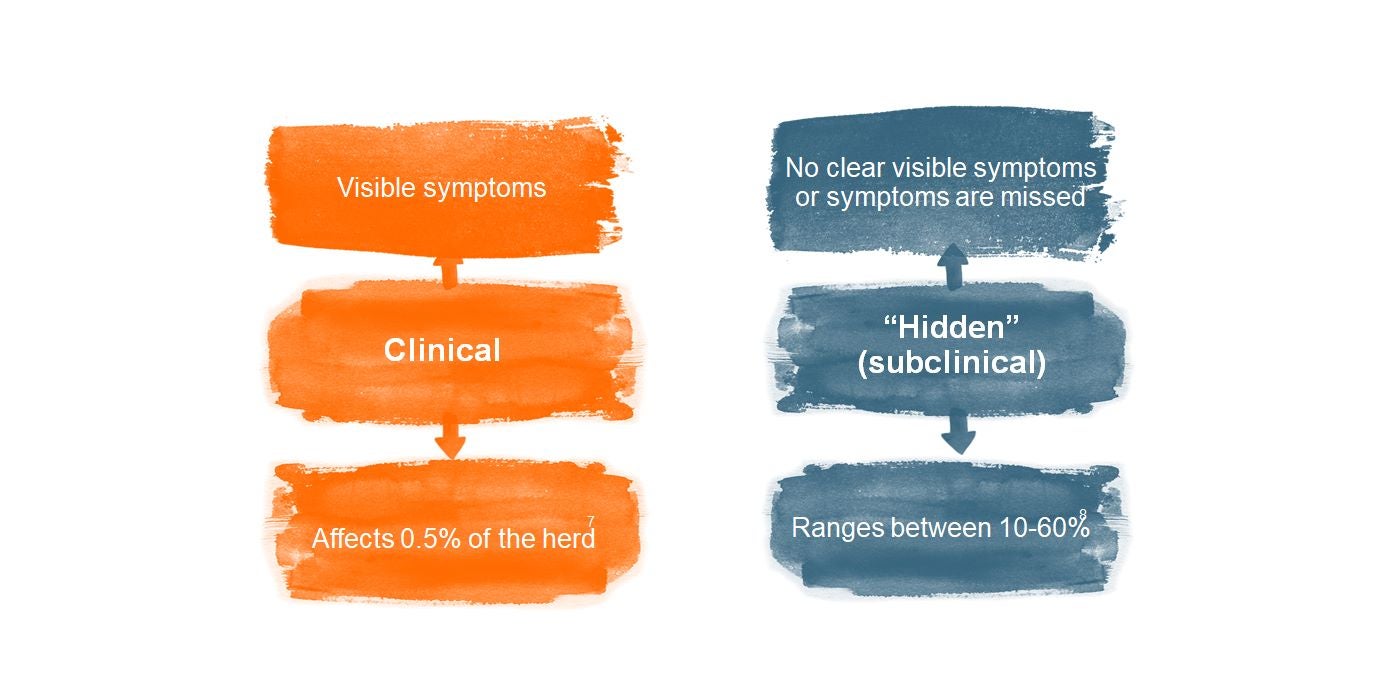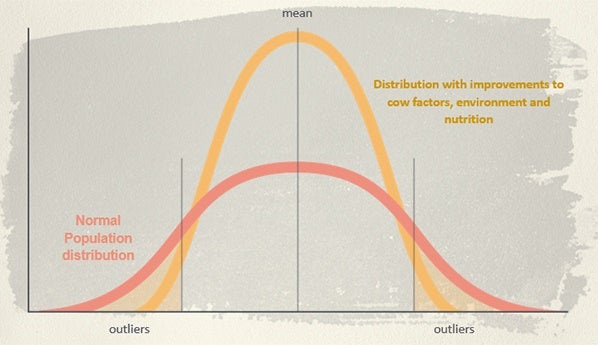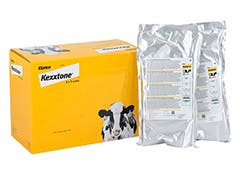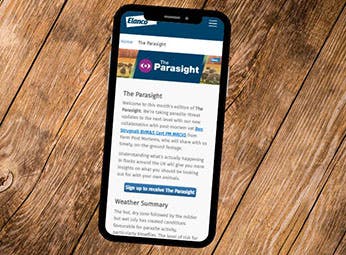Ketosis in dairy cows
Problems with transition cows usually manifest themselves in the month immediately after calving: around 75% of all adult cow health problems happen in the period around calving1, with around 50% of cows having some health issues at this time2. However, multiple factors can contribute, and many of the important precipitating factors start prior to calving, ie. in the dry cows.
Identifying ketosis
Identifying ketosis in dairy cows involves doing whole herd assessments and identifying the cows most at risk of ketosis:
Preventing subclinical ketosis
One option for reducing the risk of ketosis in these high risk cows is to administer a Kexxtone™ bolus 3-4 weeks pre-calving. Kexxtone™ is a prescription-only medicine available from your veterinary surgeon which contains monensin. Monensin is released over a period of around 90 days and works by favouring the proprionate-producing bugs in the rumen. Proprionate is used by the cow to produce glucose, which is the main energy source required for various processes including milk production. More proprionate = more glucose = decreased risk of ketosis.
Contact your Elanco Account Manager or veterinary surgeon for more information on Kexxtone™.
1. Major Advances in Disease Prevention in Dairy Cattle, S J LeBlanc, K D Lissemore, D F Kelton, T F Duffield, K E Leslie. American Dairy Science Association 2006.
2. LeBlanc, S., 2010. Monitoring metabolic health of dairy cattle in the transition period. Journal of Reproduction and Development 56 (Suppl), S29–S35.
3. Walsh R.B., Walton J. S. et al. The effect of subclinical ketosis in early lactation on reproductive performance of postpartum dairy cows J. Dairy Sci. 2007;90: 2788-2796.
4. Ospina P. A., Nydam D.V. et al. Association between the proportion of sampled transition cows with increased nonesterified fatty acids and β-hydroxybutyrate and disease incidence, pregnancy rate, and milk production at the herd level Journal of Dairy Science 2010;93: 3595-3601.
5. LeBlanc S (2012) Integrating metabolic & reproductive health in dairy cows, Keynote lecture, XXVII WBC 2012.
6. Raboisson et al., 2015. The economic impact of subclinical ketosis at the farm level: Tackling the challenge of over-estimation due to multiple interactions. Preventive Veterinary Medicine 122 (2015) 417–425
7. Macrae, A.I. et al. Prevalence of clinical and subclinical ketosis in UK dairy herds 2006-2011. World Buiatrics, Lisbon, Portgual, 2012.
8. Elanco Farm Audit 2011, No. GN4FR110006. Data on file.
9. Huzzey, J. M., et al. (2007). Prepartum behavior and dry matter intake identify dairy cows at risk for metritis. J. Dairy Sci. 90(7): 3220-3233
10. Roche et al. 2009. Invited review: Body condition score and its association with dairy cow productivity, health, and welfare. J. Dairy Sci. 92:5769-5801.
11. Heringstad, Chang, Gianola, Klemetsdal 2005. Genetic analysis of clinical mastitis, milk fever, ketosis and retained placenta in three lactations of Norwegian Red cows. J. Dairy Sci. 88:3273-3281.
12. Rajala-Schultz, Grahn, McCulloch 1999. Effect of milk fever, ketosis and lameness on milk yield of dairy cows. J. Dairy Sci. 82:288-294.
13. Gillund, Reksen, Grahn, Karlberg 2001. Body condition related to ketosis and reproductive performance in Norwegian dairy cows. J. Dairy Sci. 84:1390-1396.
14. Duffield 2000. Subclinical ketosis in lactating dairy cattle. Vet. Clin. North Am. Food Anim. Pract. 16:231-253
15. Santschi, et al. 2011. Incidence of metabolic disorders and reproductive performance following a short (35d) or conventional (60d) dry period management in commercial Holstein herds. J. Dairy Sci. 94 :3322-3330.
16. Fricke 2001. Review: Twinning in Dairy Cattle. Prof. Anim. Sci. 17:61-67.
17. Mulligan, O.Grady, Rice, Doherty 2006. A herd health approach to dairy cow nutrition and production diseases of the transition cow. Anim. Repr. Sci. 96:331-353.
18. Duffield, T. 2007. Peripartum Metabolic Monitoring. The AABP Proceedings Vol. 40, Sept. 2007.
19. Krogh 2011. Latent class evaluation of a milk test, a urine test, and the fat-to-protein percentage ratio in milk to diagnose ketosis in dairy cows. J. Dairy Sci. 94: 2360-2367.
20. Dam, et al. 1988. The effect of age at calving on reproduction, milk production and disease incidence in the first lactation of dairy heifers. Theriogenology Vol. 30, No. 3, 583-591


